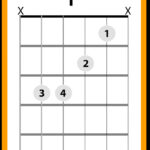Choosing the right pedals can significantly elevate the sound of your acoustic guitar, whether you’re performing on stage, recording in a studio, or simply practicing at home. While acoustic guitars are celebrated for their natural resonance and organic tone, pedals can add depth, dimension, and polish to your sound, unlocking new creative possibilities. Let’s explore some of the best pedal types that every acoustic guitarist should consider incorporating into their setup.
Essential Pedal Types for Acoustic Guitar
To truly sculpt your acoustic guitar tone, certain pedal categories stand out as essential. These include tuners, compressors, octave pedals, chorus, delays, and reverbs. Each of these pedal types addresses different aspects of your sound, from basic utility to creative sound shaping.
Tuner Pedals: Ensuring Perfect Pitch
Maintaining accurate tuning is paramount for any guitarist, and a dedicated tuner pedal offers a convenient and precise solution. Pedals like the TC Electronic PolyTune series are widely acclaimed for their speed and accuracy. The PolyTune allows for both chromatic tuning and polyphonic tuning, where you can strum all strings at once and see which are out of tune.
Alt text: TC Electronic PolyTune tuner pedal displaying tuning status.
When using tuner pedals, it’s worth noting a potential issue: signal bleed. Sometimes, digital interference can leak through power connections to other pedals when the tuner is engaged (and muting the signal). Using battery power or an isolated power supply like a Cioks DC10 can eliminate this problem, ensuring a clean and noise-free signal path. This phenomenon isn’t exclusive to PolyTune pedals and can occur with various tuner models.
Compressor Pedals: Dynamics Control and Sustain
A compressor pedal is a valuable tool for acoustic guitarists seeking to even out their dynamics, add sustain, and enhance clarity. The Wampler Ego Compressor is a highly regarded option, known for its versatility and ability to deliver a polished and professional sound. It can smooth out strumming, fingerpicking, and lead lines, making your acoustic guitar sound more consistent and present in a mix.
Alt text: Wampler Ego Compressor pedal with control knobs visible.
For those pursuing a truly transparent compression, the Carl Martin Compressor/Limiter stands out. Transparent compressors aim to reduce dynamic range without significantly altering the inherent tone of the instrument, preserving the natural acoustic character while providing controlled dynamics.
Octave Pedals: Expanding Sonic Textures
An octave pedal adds richness and depth to your acoustic guitar by generating notes one or two octaves above or below the original signal. The Electro-Harmonix POG (Polyphonic Octave Generator) is a legendary pedal in this category. It accurately tracks your playing and creates convincing octave-up and octave-down harmonies, capable of making a single acoustic guitar sound remarkably like a 12-string guitar or even simulate bass lines.
Alt text: Electro-Harmonix POG octave pedal with sliders and footswitches.
While octave pedals can be more experimental for acoustic guitar, they offer a unique way to thicken your sound for solos, create interesting textures for fingerstyle playing, or add a unique dimension to chord progressions.
Chorus Pedals: Adding Warmth and Dimension
Chorus pedals create a shimmering, spacious effect by layering slightly detuned and delayed copies of your original signal. The TC Electronic Corona Chorus (full-size version) with its tri-mode option offers a range of chorus tones, from subtle thickening to lush, swirling modulation.
Alt text: TC Electronic Corona Chorus pedal with controls and footswitch.
Chorus can add warmth and dimension to acoustic guitar, making it sound fuller and more engaging, particularly in solo performances or sparser arrangements. While the smaller TC Electronic Corona Chorus Mini is also available, the full-size version often includes more versatile features like the tri-mode switch.
Delay Pedals: Creating Space and Echoes
Delay pedals produce echoes of your playing, ranging from short slap-back effects to long, ambient washes. The TC Electronic Flashback series, especially the Flashback X4 and newer models, are excellent choices for acoustic guitarists. The Flashback X4’s ability to store multiple delay presets is particularly useful for live performances, allowing you to switch between different delay types at the touch of a button.
Alt text: TC Electronic Flashback X4 delay pedal with multiple footswitches and knobs.
For a warmer, tape-style delay, the Wampler Faux Tape Echo is a superb option. Tape echo emulations often add subtle saturation and modulation, creating a vintage and organic delay character that can complement acoustic guitar beautifully. Many players use a subtle delay like a tape echo as an “always-on” effect to add a touch of ambience and depth to their base acoustic tone. For the highest quality delay effects, Strymon pedals are often considered the industry benchmark, offering pristine sound quality and extensive features.
Reverb Pedals: Adding Natural Ambience
Reverb pedals simulate the natural reflections of sound in a space, adding ambience and depth to your acoustic guitar. The TC Electronic Hall of Fame (HoF) Reverb is a versatile and popular choice, offering a wide range of reverb types beyond just spring reverb.
Alt text: TC Electronic Hall of Fame reverb pedal with controls and logo.
While some acoustic amplifiers include spring reverb, a dedicated reverb pedal like the HoF allows for a broader palette of reverb sounds, including hall, plate, room, and shimmer reverbs. For players seeking top-tier reverb quality, Strymon again stands out, producing some of the most sought-after reverb pedals on the market, known for their lushness and realism.
Conclusion: Crafting Your Acoustic Pedalboard
Experimenting with pedals can open up a world of sonic possibilities for your acoustic guitar. From essential utility pedals like tuners and compressors to creative effects like octave, chorus, delay, and reverb, building an acoustic pedalboard allows you to shape your tone and find your unique voice as an acoustic guitarist. Consider these pedal types as a starting point and explore the vast landscape of effects pedals to discover what best enhances your acoustic playing style and musical vision.

